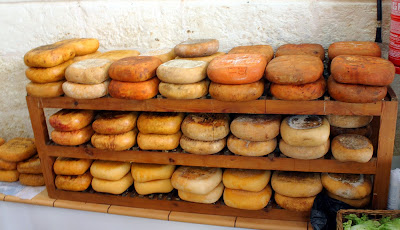I’ll bet we have all met people who don’t appreciate birds. You know the type. Just as you’re enjoying a quiet spot of birding, relishing the grace and beauty of a Spotted Flycatcher or watching a Peregrine beating up the waders, along comes Mr Dickhead, all mouth and an over-abundance of non-functioning brain cells. He’s hoping to wind-up a nerdy birder. Although he’s never met a birder he knows they are all nerdy 'cos his mate in the pub told him.
Spotted Flycatcher
"Spotted anything interesting pal? What f...ing use are birds anyway? I can’t sleep at night because of bloody seagulls on my roof from dawn until dusk. And they shit too much. That is when they are not rooting through my bin bags and scattering KFC boxes all over.”
“And those sodding pigeons, rats with wings I call them, clogging up the town centre and crapping everywhere. Same with those duck things in the park. My kids can’t eat their jam butties in peace without “Quack, quack, bloody quack. Give us our daily bread”.
There’s not much point in trying to explain science to a moron, someone who’s never taken the trouble to think about birds’ role in the natural world; how birds maintain sustainable population levels of their prey and predator species and, after death, provide food for scavengers and decomposers. How birds are important in plant reproduction through their services as pollinators or seed dispersers and why birds are important members of many ecosystems.
I suppose the poor chap could have a touch of Ornithophobia. Yes, there’s a name for a person's abnormal and irrational fear of birds, or someone with a dislike of birds because of their habits or reputation as pests e.g. Carrion Crows, Collared Doves, Jays, Starlings, Gulls, Magpies and pigeons (feral & Woodpigeon).
In such cases, keep it simple. I mention that birds eat a lot of insects, bugs and creepy-crawlies, all the things that Mr D also hates, and that if birds didn't do that, the world would be knee deep in such things within the week. Such a mind-blowing, revolutionary idea is often enough to make their dimmed light flicker, at least for the time being. Off he goes in search of more worldly knowledge and I go back to birding with a cheery under my breath “bugger off”.
But, here’s proof. “Birds around the world eat 400 to 500 million metric tonnes of beetles, flies, ants, moths, aphids, grasshoppers, crickets and other anthropods per year.”
Cuckoo
It’s from Science Daily, 2018.
The numbers have been calculated in a study led by Martin Nyffeler of the University of Basel in Switzerland. The research, published in Springer's journal The Science of Nature, highlights the important role birds play in keeping plant-eating insect populations under control.
"Nyffeler and his colleagues based their figures on 103 studies that highlighted the volume of prey that insect-eating birds consume in seven of the world's major ecological communities known as biomes. According to their estimations, this amounts to between 400 and 500 million tonnes of insects per year but is most likely to be on the lower end of the range. Their calculations are supported by a large number of experimental studies conducted by many different research teams in a variety of habitats in different parts of the world.
"The global population of insectivorous birds annually consumes as much energy as a megacity the size of New York. They get this energy by capturing billions of potentially harmful herbivorous insects and other arthropods," says Nyffeler.
Bee Eater
Forest-dwelling birds consume around 75 per cent of the insects eaten in total by birds which make up about 300 million tonnes of insects per year. About 100 million tonnes are eaten by birds in savannah areas, grasslands and croplands, and those living in the deserts and Arctic tundra. Birds actively hunt insects especially during the breeding season, when they need protein-rich prey to feed to their nestlings.
Swallows
Further, the researchers estimated that insectivorous birds together only have a biomass of about three million tonnes. Nyffeler says the comparatively low value for the global biomass of wild birds can be partially explained through their very low production efficiency. This means that respiration takes a lot of energy and only leaves about one to two percent to be converted into biomass.
"The estimates presented in this paper emphasize the ecological and economic importance of insectivorous birds in suppressing potentially harmful insect pests on a global scale -- especially in forested areas," explains Nyffeler, who says that this is especially so for tropical, temperate and boreal forest ecosystems.
"Only a few other predator groups such as spiders and entomophagous insects (including in particular predaceous ants) can keep up with the insectivorous birds in their capacity to suppress plant-eating insect populations on a global scale," he adds.
Hoopoe
A study from 2017 which Nyffeler also led showed that spiders consume between 400 and 800 million tonnes of insects each year. Other predator groups like bats, primates, shrews, hedgehogs, frogs, salamanders, and lizards seem to be valuable yet less effective natural enemies of plant-eating insects. He says their influence seems to be more biome-specific rather than on a worldwide scale. For instance, lizards help to suppress insects on tropical islands, but less so on a broader scale.
"Birds are an endangered class of animals because they are heavily threatened by factors such as afforestation, intensification of agriculture, spread of systemic pesticides, predation by domestic cats, collisions with human-made structures, light pollution and climate change. If these global threats cannot soon be resolved, we must fear that the vital ecosystem services that birds provide -- such as the suppression of insect pests -- will be lost," says Nyffeler.
Short-toed Lark
Maybe all birders should carry a paper copy of the above? It would come in handy when we next meet up with Mr Butthole; although the chances are he can’t read.
Linking this post to Anni's Birding Blog.




































































































